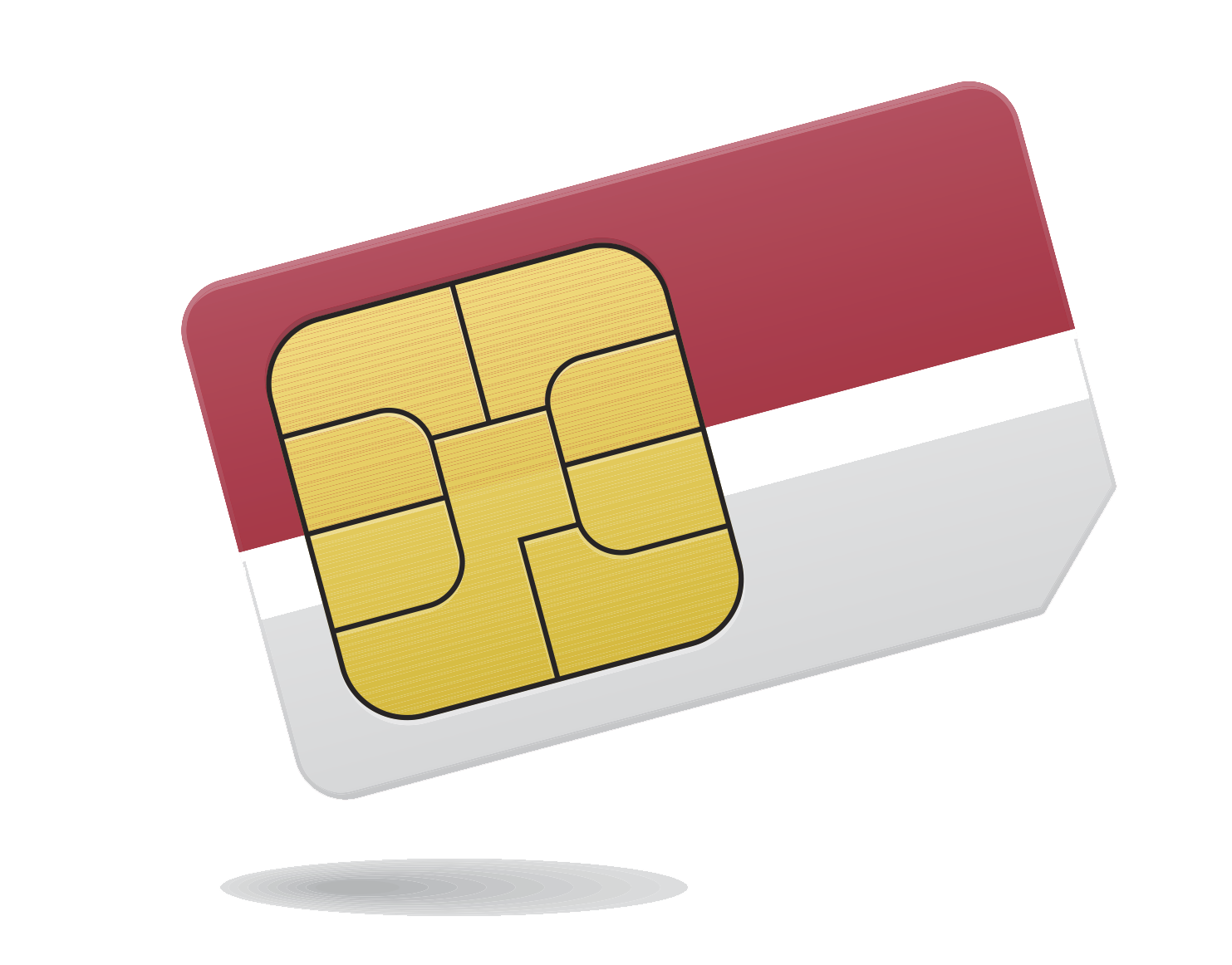
Stay Connected in Thailand
Navigate, share, and stay in touch with our comprehensive eSIM guide for Thailand.
1Introduction to Thailand as a Travel Destination
Thailand is a very tourist-friendly country when it comes to mobile connectivity – visitors have plenty of options to get online, from inexpensive local SIMs to convenient travel eSIMs. If you're planning a trip, you might be wondering the best way to stay connected: this guide will explain how to get internet in Thailand for tourists in a cost-effective and hassle-free manner. Generally, travelers can choose between buying a local Thai SIM card (widely available at airports and 7-Elevens) or using an international eSIM that you set up before arrival. Both short-term vacationers and long-term visitors will find Thai mobile data plans quite affordable compared to many countries.
2Mobile and Internet Infrastructure
Thailand has a robust mobile network with multiple major operators ensuring you'll get service in most places that tourists go. The three main mobile providers are AIS, True Move H, and dtac, all of which offer 4G LTE coverage across Thailand and have launched 5G in big cities like Bangkok.
In general, AIS is regarded as having the most comprehensive coverage nationwide, closely followed by TrueMove H, with dtac slightly behind. In practical terms, this means if you're traveling to remote provinces or islands, AIS often has the strongest signal, whereas dtac might have occasional weak spots outside urban centers. That said, all three operators cover the vast majority of populated areas – even many smaller islands and rural towns have 4G signal from at least one provider. For example, popular tourist islands (Phuket, Koh Samui, Koh Phangan, etc.) enjoy solid 4G/5G from AIS and TrueMove, and even lesser-visited regions in the north or northeast (Isan) have pretty good 4G coverage nowadays. 5G coverage is mostly concentrated in Bangkok and other major cities (Pattaya, Chiang Mai, Phuket, etc.) at the moment. As you venture into countryside or national parks, you may drop to 3G or 4G-only, but outright "no signal" zones are relatively rare for the big two networks.
Network Providers Overview
| Provider | Coverage | Notes |
|---|---|---|
| AIS | Most comprehensive nationwide coverage, strong signal in remote areas and islands | Best choice for travelers exploring off-the-beaten-path locations |
| TrueMove H | Excellent coverage in urban areas and tourist destinations | Very reliable service in major cities and popular island destinations |
| dtac | Strong in cities but may have occasional weak spots in remote areas | Good option for urban travelers, but less ideal for remote exploration |
3Guide to Getting Mobile Internet
Local SIM vs eSIM
Thailand gives travelers the luxury of choice between picking up a local SIM or activating an international eSIM. With an eSIM for Thailand, you purchase a data plan online (from providers like Airalo, Holafly, etc.) and scan a QR code or use an app to install the eSIM profile on your phone. There's no need to provide your passport to the Thai authorities in this case, since the eSIM is provisioned outside the country – it will come pre-registered through the provider. This can save you time, especially if you arrive late at night or want internet immediately for ride-hailing (Grab) or maps. International eSIMs are data-only, meaning you won't get a Thai phone number for calls/SMS, but you can keep using your regular WhatsApp/LINE or other apps to communicate.
Where to Buy
Local SIM cards for tourists are extremely easy to get – upon arriving at Bangkok (BKK or DMK) airport, you'll find AIS, TrueMove, and dtac booths offering tourist SIM packages. Typical deals include, for example, 7–15 days of unlimited data for a flat fee (often around 299–599 Thai Baht, roughly $9–$18 USD). Buying a SIM requires showing your passport for registration (this is mandatory by law in Thailand), but the process only takes a few minutes. You can also buy Thai SIMs at any 7-Eleven or phone shop in the country; the staff will register it with your passport. The advantages of a local SIM are low cost and generous data – Thailand has some of the cheapest prepaid data packages, often with "unlimited" data (sometimes a high-speed cap after which speed is reduced) which are great for heavy data users. You also get a local Thai number, which might be useful for receiving SMS (for example, if you need to get OTP verification from a Thai service or want to call local numbers for bookings).
4Major Mobile Providers and Plans

Airalo
Airalo is a well-known eSIM store with coverage in over 200 countries, and it provides Thailand eSIM plans that are affordable and reliable. Currently, Airalo offers a couple of Thailand-specific eSIM packages, such as an 8-day unlimited data plan for around $19.90 and a 15-day plan (also unlimited data) for around $29.90. These plans use dtac's network, one of Thailand's top operators, which means you get good coverage in cities and most rural areas. A nice perk of Airalo's Thailand eSIM is that it even comes with a small amount of local calling credit – this is somewhat unique, giving you the ability to make a few local calls if needed (e.g., to book a tour or hotel) via the included credit. Airalo's app makes it easy to top up or extend your plan if you need more data or time. Airalo allows tethering on its eSIMs, so you can create a hotspot and share your data with a laptop or other devices without issues.
| Plan | Data | Validity | Price | Features |
|---|---|---|---|---|
| Thailand 8-Day Unlimited | Unlimited | 8 days | $19.90 |
|
| Thailand 15-Day Unlimited | Unlimited | 15 days | $29.90 |
|

Holafly
Holafly is another excellent eSIM provider favored by many visitors to Thailand, particularly because it offers unlimited data plans. Holafly's eSIM for Thailand comes in durations from 5 days up to 90 days. For example, their Thailand packages include 5 days of unlimited data for $19, 7 days for $27, 15 days for $47, 30 days for $64, and so on. These plans do not have a data cap – you get uncapped internet at 4G speeds throughout Thailand. One advantage Holafly advertises is that their eSIM can roam on multiple networks (TrueMove H and dtac), automatically switching to whichever has better signal. This multi-network coverage is great for ensuring you stay connected even if one carrier has a blind spot (it's like having both True and dtac SIMs in one). However, there are a couple of downsides: Holafly eSIMs do not support mobile hotspot/tethering (the company explicitly notes that hotspot usage is not allowed on their unlimited plans), so you won't be able to share your phone's internet with other devices.
| Plan | Data | Validity | Price | Features |
|---|---|---|---|---|
| Thailand 5 Days | Unlimited | 5 days | $19 |
|
| Thailand 7 Days | Unlimited | 7 days | $27 |
|
| Thailand 15 Days | Unlimited | 15 days | $47 |
|
| Thailand 30 Days | Unlimited | 30 days | $64 |
|

Nomad
Nomad is a popular eSIM marketplace that offers a variety of plans in Thailand, often with competitive pricing and flexibility. Nomad's Thailand eSIM plans typically include small data packs at low cost (e.g., 1 GB for ~$4, 3 GB for around $8-$9, etc., up to larger packs like 10 or 20 GB). The validity can range from a week to 30 days depending on the pack. Nomad also has regional Southeast Asia eSIMs that include Thailand, which can be useful if you're hopping between countries. In terms of network, Nomad usually partners with one of the major Thai operators (often AIS or dtac). For instance, many Nomad users report getting connected to AIS's network when using Nomad in Thailand – which is great, considering AIS has Thailand's widest coverage. Like Airalo, Nomad eSIMs are data-only and support tethering on most plans.
| Plan | Data | Validity | Price | Features |
|---|---|---|---|---|
| Thailand 1GB | 1 GB | 7 days | ~$4 |
|
| Thailand 3GB | 3 GB | 30 days | ~$8-9 |
|
| Thailand 10GB | 10 GB | 30 days | ~$20 |
|
| Southeast Asia Regional | Various options | Varies by plan | From $15 |
|

Local Thai SIM Cards
Local SIM cards in Thailand offer excellent value, particularly for visitors who need a Thai phone number or want the absolute best price-to-data ratio. All three major carriers (AIS, TrueMove H, and dtac) offer specialized tourist SIM packages that are extremely affordable. These tourist SIMs are readily available at airport arrival halls, 7-Eleven stores throughout the country, and official carrier shops. Registration requires your passport (mandatory by Thai law), but the process is quick and straightforward. Unlimited data packages are common for tourist SIMs, making them particularly attractive for heavy data users.
| Plan | Data | Validity | Price | Features |
|---|---|---|---|---|
| AIS Tourist SIM | Unlimited (sometimes with speed cap after high usage) | 7-15 days typical | 299-599 THB ($9-18 USD) |
|
| TrueMove H Tourist SIM | Unlimited or large data bundle | 7-15 days typical | 299-599 THB ($9-18 USD) |
|
| dtac Tourist SIM | Unlimited or large data packages | 7-15 days typical | 299-599 THB ($9-18 USD) |
|
5Device Compatibility and Activation
Before choosing between a Thai SIM card or an eSIM, check your device compatibility. For physical SIM cards, your phone simply needs to be unlocked (not tied to a specific carrier). For eSIMs, your device must support this technology - this includes iPhone XR/XS and newer, Samsung Galaxy S20 and newer, Google Pixel 3 and later, and many other recent smartphones. There are no special registration or IMEI requirements for short-term travelers using either option in Thailand, though by law all SIM cards must be registered to a passport or Thai ID card (this is handled during purchase).
6Tips and FAQs for Staying Connected
Where should I buy or activate my SIM/eSIM upon arrival?
If you're opting for a local SIM, the easiest place to buy one is at the airport arrivals hall. After clearing customs, you'll see official booths for AIS, True, and dtac. They all have similar tourist packages, so you can pick based on price or line length. Staff will set up the SIM and ensure it's working before you walk away. If you decide to wait and buy in town, any 7-Eleven can sell you a SIM (usually they sell the operator "tourist SIM" packs over the counter). Remember your passport is required to register any new SIM. If you're using an eSIM, have it installed ahead of time and simply enable it in your phone settings once you land – it should connect to the network within a couple of minutes. Sometimes toggling airplane mode on/off helps the eSIM latch onto the local network.
Which network should I choose in Thailand?
Thailand's carriers all have good coverage, but if you have a dual-SIM phone or multiple eSIM profiles (say you have both Airalo and Holafly active), you might notice one has better signal in a given area. You can manually switch networks if needed. For example, if you have a Holafly eSIM and it's on TrueMove but you find dtac is stronger in your area, you could try to manually select the dtac network. Generally, AIS has great rural coverage, so if you know you'll be in offbeat areas, using an eSIM or SIM that runs on AIS could be beneficial. In cities, all networks are fine. If you ever experience slow data, check if your phone shows 3G instead of 4G/5G – in some remote areas you might fall back to 3G which is slower.
How can I save on data usage in Thailand?
Save your mobile data by taking advantage of Wi-Fi at your accommodation or cafes. Most hotels, hostels, and guesthouses in Thailand offer free Wi-Fi for guests – ask at check-in for the password. In cities like Bangkok and Chiang Mai, many coffee shops and co-working spaces have free Wi-Fi (you might need to ask staff for the login). Even some public places like malls offer free Wi-Fi for shoppers (often requiring you to enter your email or foreign phone number for an OTP). While mobile data is cheap, using Wi-Fi for heavy downloads (like app updates or backing up photos) can conserve your data allowance if you have a limited plan.
What should I know about handling physical SIM cards?
If you swap to a Thai physical SIM, keep your original SIM card safe – a little plastic SIM holder or even a small ziplock bag in your wallet helps (those things are tiny!). Also, be aware that your original number won't receive calls/texts while the SIM is out, unless you have it active in an eSIM slot or secondary slot. Many travelers use messaging apps exclusively, so it's not a big issue. If you have a dual-SIM phone, you can actually put the Thai SIM in one slot and keep your home SIM in the other (just disable data roaming on your home SIM to avoid charges, and use the Thai SIM/eSIM for data). This way you can still get calls or texts to your home number if needed.
How do I top up or extend my plan?
Tourist SIMs in Thailand often come pre-packaged with unlimited data for a set number of days and might not need topping up. But if you go for a regular prepaid SIM or stay longer, you can easily top up online or via scratch cards. Each operator has an English-friendly app (AIS has "my AIS", dtac has "dtac app", True has "True iService") where you can buy more data packages with a foreign credit card. Alternatively, 7-Eleven counters can top up your number – just say the provider and phone number and amount (written on paper to avoid confusion). For eSIM plans, extending usually means purchasing an additional data pack from the provider's app/website. Do it while you still have some data, so the transaction goes through.
Are there any internet restrictions or roaming considerations?
Thailand's internet is largely open, but some websites might be geo-restricted (e.g., banking sites or streaming content from back home). If needed, use a VPN to access those securely. From a roaming perspective, if you plan to visit neighboring countries (Malaysia, Cambodia, etc.), note that Thai SIM cards will incur roaming charges there. If you have a regional eSIM (like Airalo's Asia eSIM), it may cover multiple countries which saves you from buying new SIMs at each border.
Conclusion
Staying connected in Thailand is remarkably easy and affordable, whether you choose an international eSIM for convenience or a local SIM card for maximum value. The country's robust mobile infrastructure ensures reliable coverage in most tourist destinations, with AIS and TrueMove offering the best nationwide service. For most short-term visitors, an eSIM from providers like Airalo or Holafly offers the simplest solution - activate before arrival and enjoy immediate connectivity. Travelers planning longer stays or requiring a Thai phone number might prefer the excellent value of local tourist SIMs, which offer unlimited data at very competitive prices. Whichever option you choose, you'll enjoy fast, reliable connectivity that enhances your Thai experience, from navigating Bangkok's bustling streets with ride-hailing apps to sharing those perfect sunset photos from the islands.